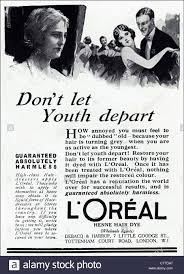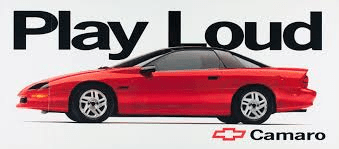Ad Campaigns
Ad Campaigns have become part of the norm when competing online. Whether it’s Google or social media, advertising channels are more widespread than ever.
Ad Campaigns
Ad Campaigns and the accompanying graphics have moved culture forward, creating movements that have brought real change to the world. The campaigns could change the world through art and product placement. Although the concept of advertising has been around since the early 15th century, technology has significantly enhanced it. Print ads have been around since the 15th century in one form or another.
Everything, from the graphic to the distribution of the ad, has changed drastically over the last 20 to 30 years. Companies have shifted from selling products to marketing ideas and concepts. This is most apparent with Big Tobacco. Coca-Cola’s advertising graphics have changed how we imagine Santa and many other things. We are overly influenced by campaign advertising and the images it uses to shape our thoughts and purchasing decisions.
19th & 20th Century Ads
Using and manipulating pictures has added a much-needed new dimension to ads. You can see the transformation of Ad campaigns from the 19th and 20th centuries to today. Ads in the late 1800s and early 1900s did not rely much on graphics. They contained rich text. The ads would have an image of the product or a small scene of their product in use. While advertising campaigns were once text-heavy and information-based, some images today have become iconic. The decade produced iconic snapshots, such as the ‘I Want You’ ad for the US Army. This Ad campaign was so effective that the man pictured in the ad has become “Uncle Sam,” the personification of America.
Advertising in the 1920s
Advertising campaigns in the 1920s relied more on pictures and graphics than on text, but they remained text-heavy. There was no significant change in advertising in the 1930s, as it continued the text-heavy ideas of previous decades. The continued effort to advance the Ad campaign came to a halt due to the financial crisis of the 1930s.
This is a 1920s print ad for the beauty company L’Oreal. The Ad follows the layout of the time, featuring a picture and a substantial amount of text, but lacks actual storytelling with the graphic alone. The ad relies on facts and figures, rather than a visually appealing image that draws the consumer in. In the 1940s and 1950s, companies started using larger graphics as the primary focus of Ad campaigns. Companies begin telling a story using pictures and graphics instead of rich text.
’60s and beyond
“Advertisements such as Volkswagen’s, “Think Small” ad was the first of what would later be called the ‘Creative Revolution’ of the 1960s and 1970s.” (DesignCrowd). The ’60s and ’70s are considered a ‘creative revolution’ because companies started breaking the mold of the previous decades. In this era, you see ad campaigns featuring the product in a setting with minimal wording and unnecessary filler text. The Ads utilize more color and balance between the text and graphics, resembling today’s ad campaigns.
80’s & 90’s
Chanel’s ad campaigns in the 1980s featured lipstick. The 1980s brought an era of simplicity that had been slowly emerging since the late 1960s. The ad features a product prominently, accompanied by a hand with red nail polish. They are selling both the lipstick in the mainframe and the nail polish. This is an intelligent technique to focus on the main product, but the things around are the things you sell.
There is commonly an absence of, or very little, copy and employment of neat, simple ideas.” (DesignCrowd). The concept of “less is more” became the wisdom of the ’90s, and 2000s Ad campaigns became the focus for products. “In the 21st century, simplicity and minimalism are key. These days, advertisements are often highly image-based, relying on digital manipulation.
 Chevy’s ad campaigns for the 1995 Camaro Z/28 below could be the perfect example of times’ simplicity to the extreme. This format of ads has become a standard product in the mainframe, with the ad campaign’s slogan serving as the headline and the logo positioned at the bottom.
Chevy’s ad campaigns for the 1995 Camaro Z/28 below could be the perfect example of times’ simplicity to the extreme. This format of ads has become a standard product in the mainframe, with the ad campaign’s slogan serving as the headline and the logo positioned at the bottom.
Advertising campaigns are broken down into five rules, as seen by Carrie Cousins.
The five rules are as follows:
- Write a killer high line
- Establish a visual story
- Show the unexpected
- Create an immersive experience
- Leave users wanting more
She goes on to say that the first point she makes is about a killer high line. “Strong headlines will make or break a connection between your ad design and users. The best headlines are short, simple, and lead users to complete some action.” (Carrie Cousins) This idea for an Ad campaign is powerful, especially in the current age of clickbait with online ads. Most Advertising is connected to the headline at the end, and the more compelling the headline, the more influential the ad.

Ads with a Visual Story
The following important part of the ad campaign is the graphic used in the Ad.
The visual story should include a consistent color and typography palette throughout the ad campaign and a graphical treatment of images, videos, or illustrations. Think of an ad campaign as a design project with multiple parts that are all pieces of the same puzzle.
The more the company can convey a complete message with the graphic, the more engaged the possible consumer. When an Ad has attractive graphics, the more eyes are drawn to it, the more influential the advertising campaign is.
Keeping the viewer of the advertising campaign on their feet and not knowing what to expect is the following rule.“The best ads do something that users don’t expect to see. It can be an interesting or surprising visual, text or text treatment or combination of elements.” Cousins makes a great point in this rule the more the Ad in an advertising campaign stands out. The more views the ad gets.
Consumers often create more buzz about the product when companies veer from the everyday use of graphics or ads.
Interactive Advertising
Interactive advertising has become an increasingly popular option for more companies in the digital era. This is a component Cousins sees as crucial to having a productive ad campaign.
“Give users something to do. Show them that lots of other people are doing it. Make your experience something that people feel they must be a part of.” – Carrie Cousins.
This type of advertising is typically used for travel or outdoor activities. These ads tend to be effective primarily when targeted toward the right people. They usually have a GoPro camera and a person doing the activity that they are advertising.
Cousins’ last point seems to be shared in marketing, making consumers want the product.
“A good ad leaves users wanting to know more or feel the need to act. The action can be in the form of making a purchase, supporting a cause, or even visiting your website.” – Carrie Cousins.
This last rule is the most important because you should leave them needing your product once the consumer is engaged.
How Graphic Design Is Evolving
Cousins’ main point is that you need a graphic to pull the consumer into the ad and get their attention. “How Graphic Design Is Evolving” by Natalie Norcross discusses how graphic design influences the application of ad campaigns. “Technology now plays a major role in creating digital work available in many fields. Portfolio design, presentations, signage, logos, websites, animations, and even architectural production have all traveled far since the dawn of the digital revolution.” Norcross raises a valid point about how everything in the advertising campaigns has been dramatically shifted from the original principles and ideas.
Technology has given companies numerous opportunities to reach consumers and provide them with practical ways to produce ads.
“Ikea launched a virtual-reality kitchen experience that brings you a life-size virtual IKEA kitchen. The pilot program aims to gather user feedback and suggestions.” – Natalie Norcross.
The idea of having a virtual reality ad campaign was not even thought of five years ago. With the advances in virtual reality, the idea of ads having to adjust to it is just part of the job. This also gives the advertiser even more ability to reach the consumer.
Advertisements via Digital Technology
“Along with the improvement of digital graphics technology, careers in this field have also evolved.”(Natalie Norcross) Norcross has another significant point: evolving the ads and the people who create them. Graphic designers have numerous tools at their disposal when producing ad campaigns and conveying a message.
“Technology and creativity never take on a steady form, so it is inevitable for graphic design to change as we move forward.” – Natalie Norcross.
This is a principle that is held in many different areas of work. With so many technological improvements, Graphic designers must continually refine their approach.
Coca-Cola has always been known for its advertising campaigns since its inception. It is creating the idea of what most Americans see as Santa. From 1931 to 1964, Coca-Cola advertising showed Santa delivering toys (and playing with them!), pausing to read a letter and enjoy a Coke, visiting with the children who stayed up to greet him, and raiding the refrigerators at some homes.
Effective Advertising
Big Tobacco has put forward some of the most effective advertising. They invested large amounts of money into their advertising.
“Cigarette advertisements are often evocative and play these challenges in addition to being positioned to appeal to specific groups defined by social class and ethnic identity.” – Lynch BS, Bonnie RJ.
Big tobacco would be specific with an ad campaign to have the most effect.
They would put forward ideas that many companies had tried, and they perfected.”Retail value-added promotions and specialty items. Retail value-added promotions are on the rise, including multiple packs (buy one, get one free), cents-off coupons, and free keychains or lighters blister-packed with a cigarette pack. Value-added promotions and coupons constituted the tobacco industry’s most significant marketing expenditure (40% of total marketing expenditures) in 1991.”
The way Big Tobacco targeted its clientele was so precise, it was perfect. “Additionally, advertisements often combine with interactive promotional items that appeal to children and youths. For example, many magazine advertisements feature a giveaway, non-cigarette utility items (such as calendars, lighters, T-shirts, and “action products”) associated with the “cash coupon” catalog offers.
Influencing Consumer Behavior through Advertisements
“Advertising may influence consumer behavior in both cognitive and affective ways. A cognitive influence convinces an individual that there are benefits to be derived from purchasing (or consuming) a particular product.
“In his exhaustive 1976 review of the literature, Fishbein noted: “There can be little question that cigarette ads attempt to create a positive image of the ‘smoker.’ He concluded that “our review suggests that cigarette advertising does affect cigarette consumption.” – Lynch BS, Bonnie RJ
.“The analysis revealed gender-specific relationships with the tobacco advertising campaigns that targeted women and were launched in 1967. Specifically, in girls under 18, smoking initiation increased abruptly around 1967 and peaked around 1973. At about the same time, sales of such brands as Virginia Slims peaked. The increase was especially pronounced among girls who had never attended college (1.7 times higher). The trend did not apply to women 18-20 years old, nor men.”.
Whether it is big tobacco or Coca-Cola, the use of ad campaigns influences how we buy, what we perceive as acceptable, and what we want to be associated with.
Evolution
With the evolution of the modern world, we can only expect advertising campaigns to become increasingly social media-focused. The graphics quality is growing exponentially, and the best is yet to come. 4 K is the best we have so far, but there are already rumors of 8 K graphics. Future ad campaigns will be tailored to meet the preferences of consumers. Facebook categorizes users by age, location, page likes, app usage, and browsing history.
This advertising is highly effective because it targets products that interest the consumer. Companies like Epsilon, Datalogix, Acxiom, and BlueKai are data collection companies that save information about you. This saved information consists of store loyalty cards, mailing lists, and browser cookies. This information makes customizing ads easy.
Successful Ads
Ad campaigns and graphics are essential for advertising because they can create memories and elicit an emotional response from an audience. Effective ads and images evoke emotions such as happiness and sadness, ultimately benefiting companies’ business. Some of the worst ad campaigns create anger and controversy, leading to adverse business outcomes, but not all debate is detrimental.
In many cases, controversy can start a conversation and grow a brand. The future of advertising includes more aggressive campaigns and more intuitive graphics.
Companies like Epsilon continue to transform the advertising landscape by making the marketing process more customizable and direct. Game campaigns and game graphics will also continue to improve over time. Companies today must compete to create a better product and generate the most attention from their target audience.
Whether it’s a top business website or one just getting started, online marketing is needed. Google Adwords or video marketing ad campaigns are a necessity for all businesses.
Delivering Effective Web Design & Online Marketing Services
Local Web Design Services for Small Businesses
You've come to the right place if you're looking for web design, website development, a new website, or a revamp of an existing small business website. We understand the needs of business owners and the benefits your website can provide. Besides, we know that, as website owners. You will want to see immediate results.
Furthermore, we can help your website reach an international, national, or local business and customer base. We also know how to get your customers to you. After all, small business website development and SEO know-how are our specialties!
Our customers continually praise our web design services. Check our reviews!
We Deliver Effective Web & SEO Services
Our website developers specialize in delivering exceptional websites, nothing more. Our developers' and marketers' qualifications and experience enable us to provide clear, concise solutions. Whether a website is complex or straightforward, or built on PHP or ASP, we will always keep you informed throughout the web development process.
Visualwebz LLC is the ideal firm to hire for your next project. Immediately after your website is launched, we will work with you to enhance your online presence. For example, our SEO specialists will help drive traffic to your website with this in mind. We will also ensure your web security. Remember, you must protect your website from hackers. Similarly, other website design services include website maintenance, support, and testing.
Are you interested in our services? Do you have questions about our SEO Company, expertise, or web design costs? Then contact us today at (425) 336-0069. You may also want to check our reviews and learn why our customers like us! After all, our 5-star reviews tell prospective customers why we stand out for service, punctuality, quality, and affordability.
Resources & Links
Our Blog covers a range of web resources, services, practices, and trends in web design and SEO.
Marketing & SEO
- YouTube Marketing.
- Ad campaigns and digital marketing tips.
- Keep your website out of trouble.
- Slow websites and ranking.
- Social media content.
- Essential website tools.
Web Design & Website Development
- Website redesign.
- Seattle WordPress website design.
- Professional Seattle web design.
- E-Commerce platform.
- Website questions.
- Web Design Trends to Watch Out For.
- Website services.
Web Design & SEO Services for Small Businesses
At Visualwebz, we provide a range of WordPress web design, website development, and web marketing services to a diverse group of small businesses. We deliver WordPress website design for large companies, SEO for startups, and e-commerce websites for brick-and-mortar small businesses. Our web developers have a strong understanding of the needs of small businesses. Furthermore, we encourage you to read Visualwebz reviews and see why our customers are happy with our work and outcomes.

